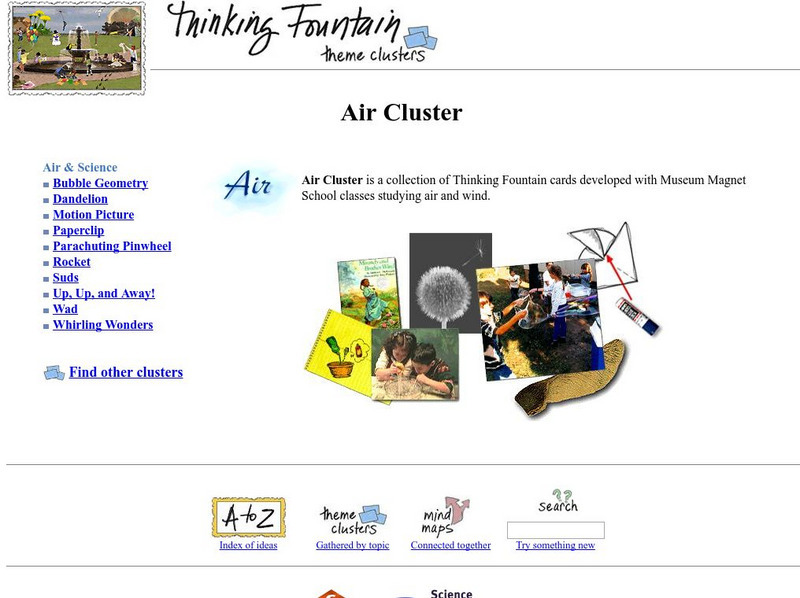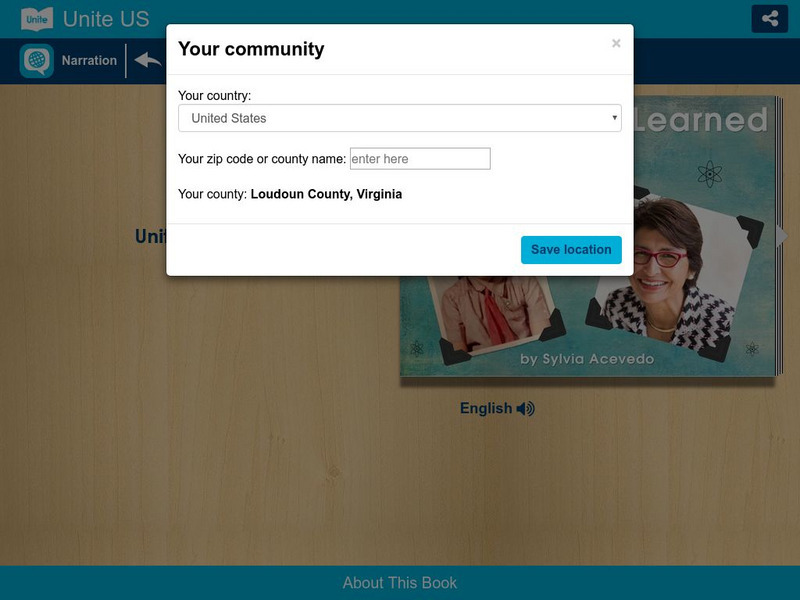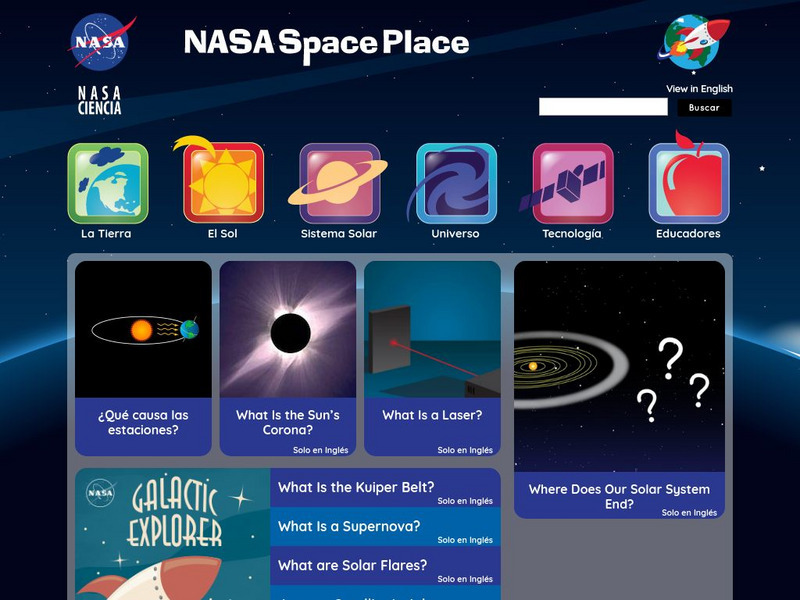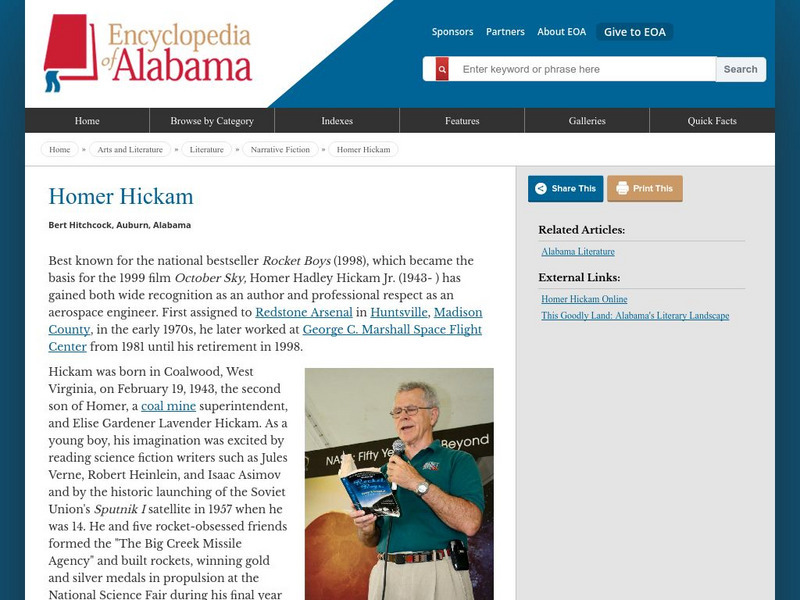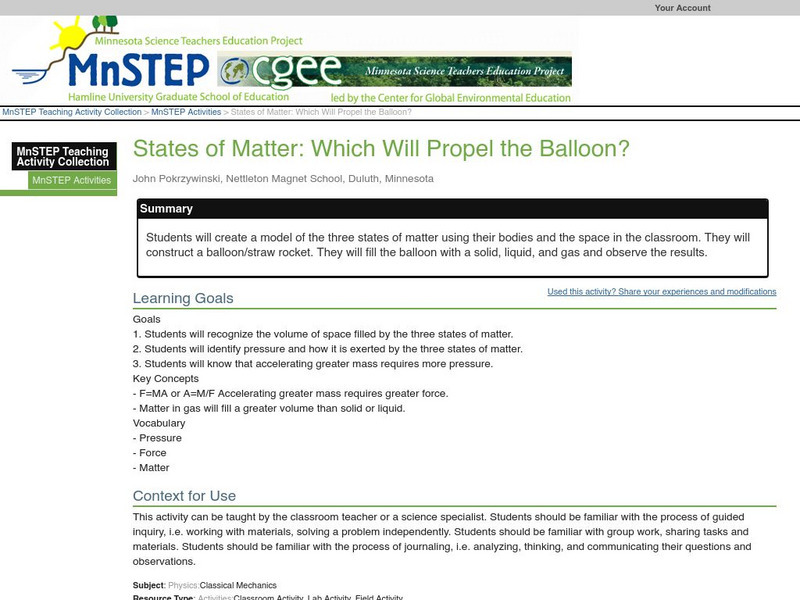TeachEngineering
Teach Engineering: Antimatter Matters
Antimatter, the charge reversed equivalent of matter, has captured the imaginations of science fiction fans for years as a perfectly efficient form of energy. While normal matter consists of atoms with negatively charged electrons...
Bill Nye
Bill Nye: Pop a Rocket
This tutorial by Bill Nye explains how to make a rocket powered by the formation of gasses. It demonstrates the importance of pressure in other explosive things like rocket engines and volcanoes.
Other
Port Discovery Children's Museum: How to Diy: Rocket Building at Home!
Instructions for building a rocket at home using basic materials then try a fun experiment to watch your rocket blast off.
Bill Nye
Bill Nye: Pop a Rocket
Try this at-home science experiment to learn how to make a two-part rocket fuel system that safely explodes.
Reading Rockets
Reading Rockets: Stem Literacy
Learn about how to strengthen literacy, inquiry, and problem-solving skills, and how to connect kids with high-quality nonfiction and informational books. Provides videos, articles for parents and for teachers, webcasts for teachers, and...
Science Buddies
Science Buddies: Teaching the Scientific Method With Paper Rockets
This lesson will introduce your students to the scientific method using a fun, hands-on activity.
Reading Rockets
Reading Rockets: Reading Topics a to Z: Scientific Language in Primary Grades
Research on the importance of teaching scientific language usage, ideas for utilizing scientific language, and rubrics for assessing student use of scientific language in grade schools.
Technovation
Curiosity Machine: Challenges: Build a Self Powered Rocket
A challenge where students will launch a small object using a chemical reaction. The site contains tips, a lesson plan, and a place for students to document their engineering design process.
NASA
Nasa: Wernher Von Braun
NASA profiles Wernher von Braun, "one of the most important rocket developers and champions of space exploration during the period between the 1930s and 1970s."
CK-12 Foundation
Ck 12: Earth Science: Satellites, Shuttles, and Space Stations
[Free Registration/Login may be required to access all resource tools.] Astronauts and space study.
Reading Rockets
Reading Rockets: Content Area Literacy
Content area lessons require specific techniques and knowledge that help students navigate different types of texts. Here you will find articles, videos, teaching strategies, webcasts, and research reports.
Science Museum of Minnesota
Science Museum of Minnesota: Air Cluster
Interesting site with links to activities about wind and air in many forms. Browse the different activities and investigations on the properties of air on the toolbar to the left of the page.
PBS
Zoom: Kitchen Chemistry
Did you know that chemistry can be found in your kitchen? Enter this amazing virtual world where your first stop is to the kitchen. Locate the clues and move on to the Lab Journal where you can test each item in two experiments: Cabbage...
Unite for Literacy
Unite for Literacy: Technology: The Girl Who Learned to Fly
In this book, Sylvia Acevedo tells how she became a rocket scientist. Includes audio narration in English, Spanish, and Turkish with text in English.
NASA
Nasa Space Place: El Space Place
NASA's space science site for kids - en Espanol. Features a wide range of activities, including games, projects, animations, and more. Also contains useful information on basic physics, chemistry, and other natural sciences, offering...
Alabama Humanities Foundation
Encyclopedia of Alabama: Homer Hickam, Jr.
Learn about this prolific author and his passion for aerospace science.
Technovation
Curiosity Machine: Challenges: Make a Water Transport Satellite
Challenge your students to create a satellite that can hold a cup of water and does not leak during a bumpy rocket launch. This site comes complete with a challenge, tips, a lesson plan, and a place for students to document their...
Science Education Resource Center at Carleton College
Serc: Mn Step: States of Matter: Which Will Propel the Balloon?
For this activity, students take part in a simulation of the three states of matter where they role play being molecules. They then create simple balloon rockets and must explain why a gas is the only state of matter that can cause the...
PBS
Pbs Kids: Activities and Videos: Force/energy
Videos that accompany activities that are hands-on challenges that focus on the engineering design process. They use simple materials, allow for multiple solutions, and are ideal for ages 9-12.
Alabama Learning Exchange
Alex: Questioning Nasa
In this lesson learners will work collaboratively to explore the "Big Question" that led up to this lesson was "Why are there two solid rocket boosters used to launch the space shuttle instead of one with the same amount of fuel?" This...
NASA
Nasa: Innovative Engines
NASA's Glenn Research Center reports on its innovative engines program, namely ion propulsion, a technology that once only powered imaginary spacecraft in science fiction novels. It is now a reality.
Michigan Reach Out
University of Michigan: Liquid Nitrogen Fun!
Lessons and science demos using liquid nitrogen.
PBS
Pbs Kids: Dinosaur Train: Station Race
How fast can you lay the tracks to pick up all the dinosaurs? Help Mr. Conductor stay on schedule by building track from station to station for the Dinosaur Train and the Rocket Train! Pick up passengers along the way and learn about all...
Math Science Nucleus
Math/science Nucleus: Rocket Trip Animation
Animated sing-along storybook "Zoom Zoom" takes readers on a ride to the moon.
Other popular searches
- Simple Rocket Science
- Science Fair Bottle Rocket
- More Rocket Science
- Physics of Rocket Science
- History of Rocket Science





